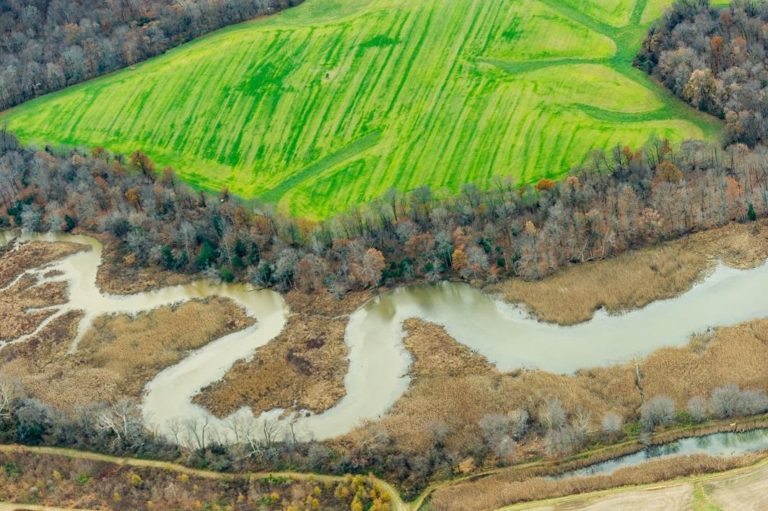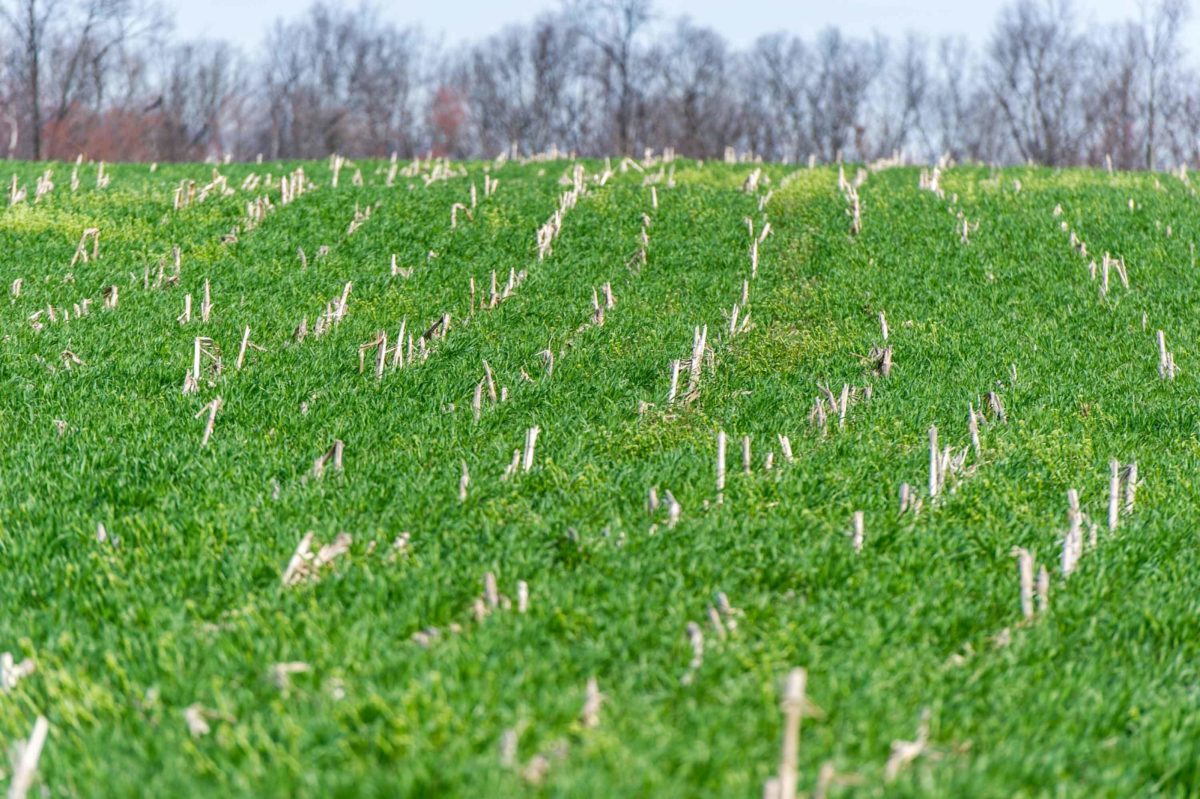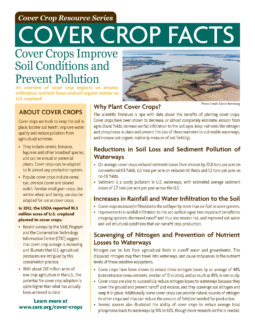An overview of cover crop impacts on nitrogen and phosphorus losses from agricultural systems.1

Download this fact sheet (PDF). This fact sheet is part of the Ecosystem Services from Cover Crops fact sheet series.
Cover Crops Reduce Nitrogen Losses to the Environment
Nitrogen can be lost from agricultural fields in runoff water and groundwater. This displaced nitrogen may then travel into waterways and cause imbalances in the nutrient levels of these sensitive ecosystems. Farmers want nitrogen to remain on the land to fertilize their crops and support productive growing systems, and society as a whole doesn’t want excess levels of nitrogen in the water.
- So how can cover crops help? They scavenge soil nitrogen and prevent it from being leached, and they can provide natural sources of nitrogen to cash crops and thus reduce the amount of fertilizer needed for production.
- Cover crops reduced the amount of nitrogen leaving a field by 1% to 89%, with a median value of 48% (across 10 studies and 16 observed reductions).
What About Phosphorous?
Compared to the impact of cover crops on erosion or losses of nitrogen, the impact of cover crops on phosphorus in the field is less studied and the research inconclusive.
- Phosphorus can be transported to waterways by above- or below-ground water flows.
- Some studies report finding no significant effect of cover crops on total phosphorus losses, sometimes because the cover crops may have reduced total phosphorus losses but increased soluble phosphorus losses (often in below-ground, leachate water).
- However, reductions have been observed, showing that cover crops reduced total phosphorus loads in water samples by 15% to 92%.
- The main mechanism by which cover crops may inhibit phosphorus losses is through preventing soil loss by covering the ground and rooting to secure the soil in place.
A Systems Approach to Enhanced Water Quality and Smart Nutrient Management
When faced with problems such as eutrophication and hypoxia in our waterways, we can turn to cover crops and other conservation practices as tools to mitigate this pollution.
- With cover crops, smart fertilizer- and manure-management decisions will also decrease nutrient-loss risks.
- Continuous ground cover paired with no-till management, will successfully prevent erosion and will therefore reduce above-ground nutrient losses to the environment.
About Cover Crops

Cover crops are tools to keep the soil in place, bolster soil health, improve water quality and reduce pollution from gricultural activities.
- They include cereals, brassicas, legumes and other broadleaf species, and can be annual or perennial plants. Cover crops can be adapted to fit almost any production system.
- Popular cover crops include cereal rye, crimson clover and oilseed radish. Familiar small grain crops, like winter wheat and barley, can also be adapted for use as cover crops.
1 Unless otherwise cited, all data comes from a bibliography compiled by SARE and the University of Missouri.
